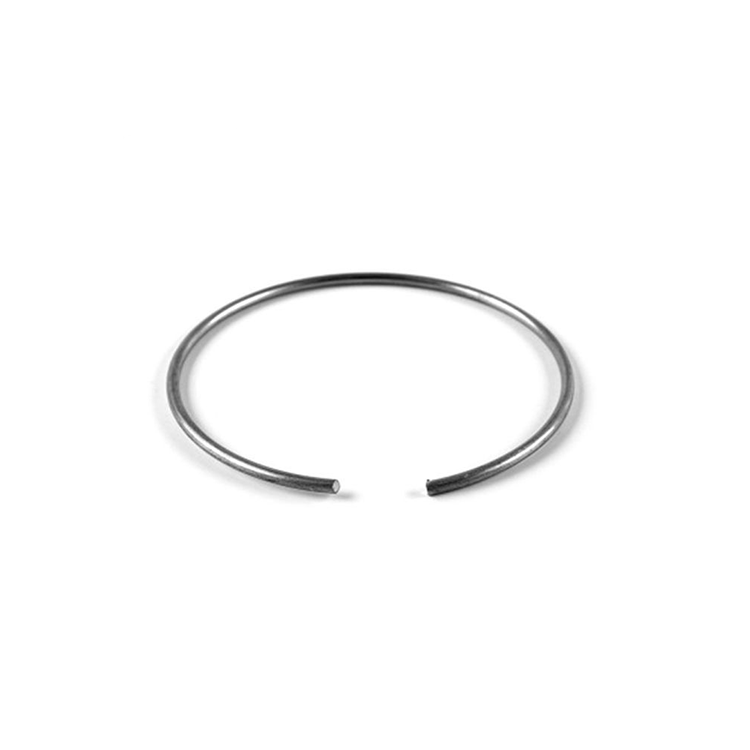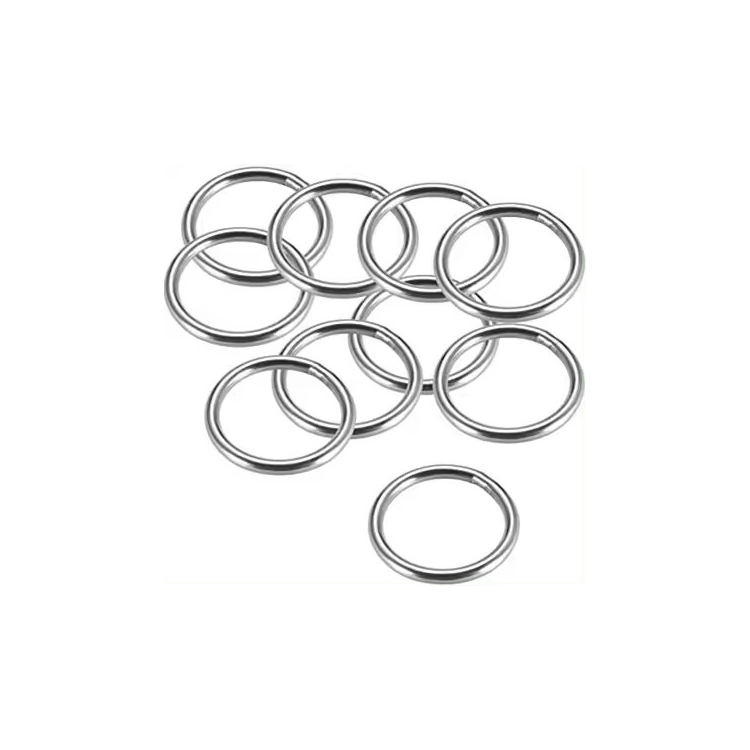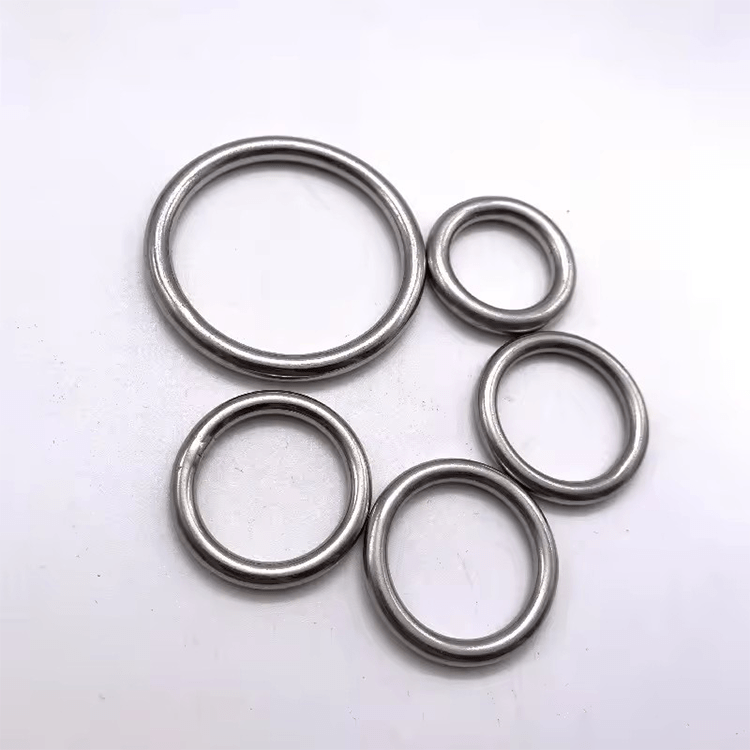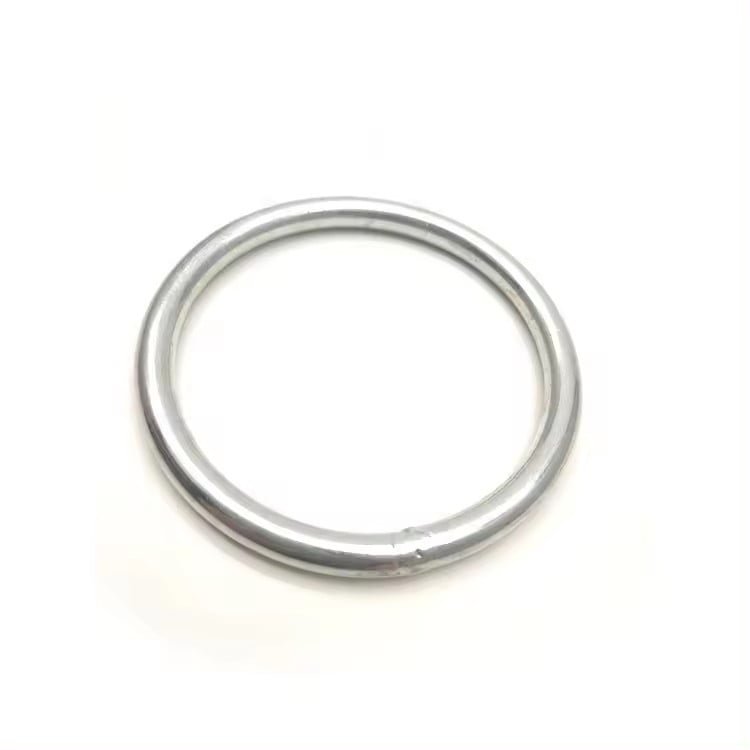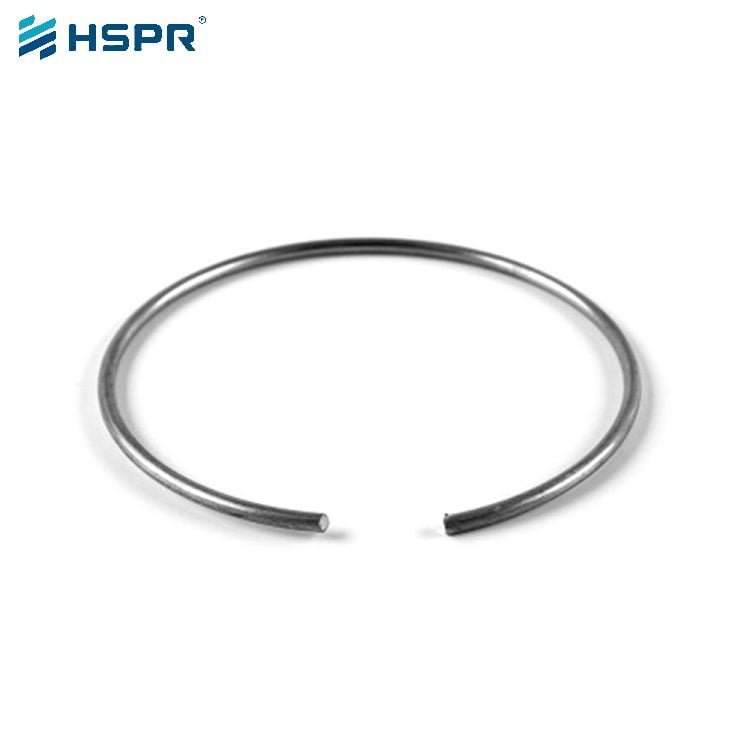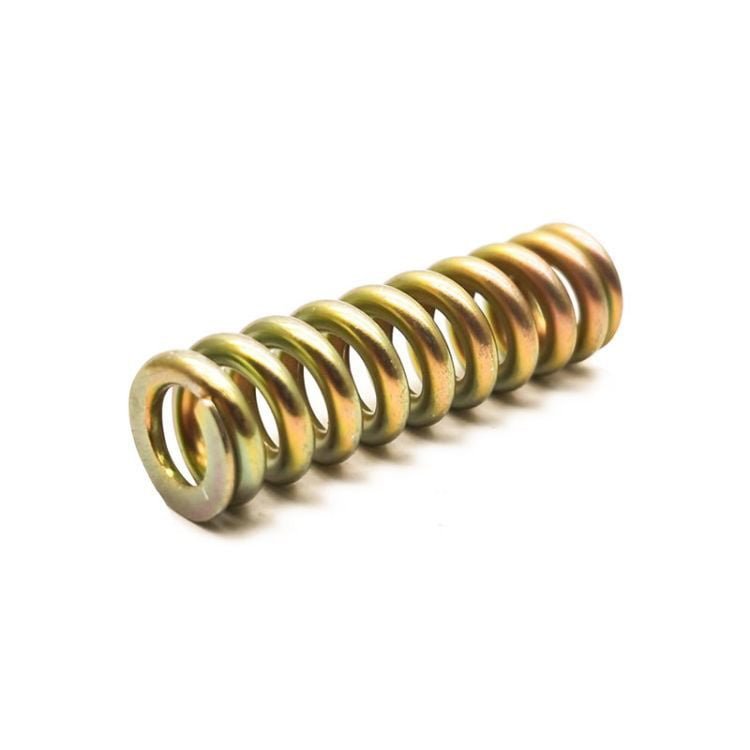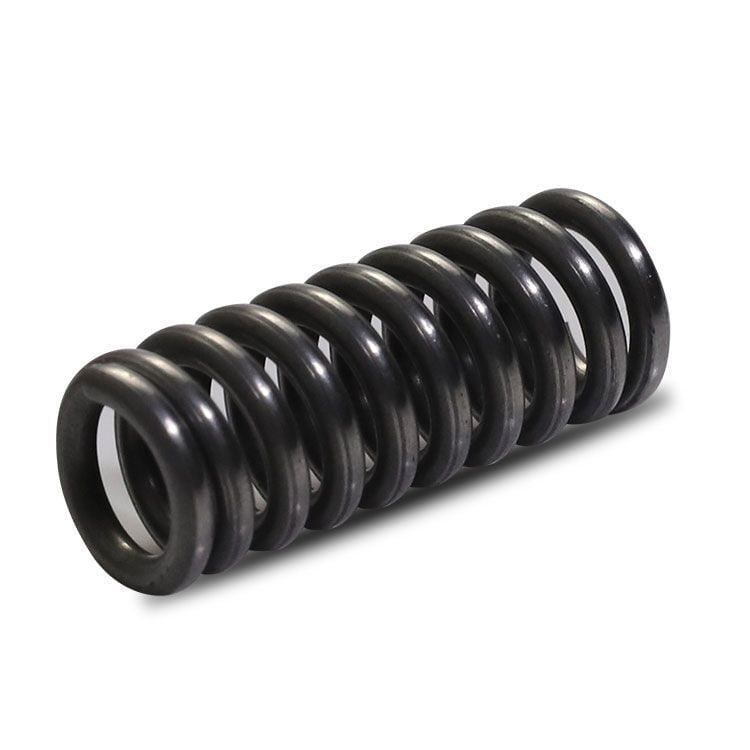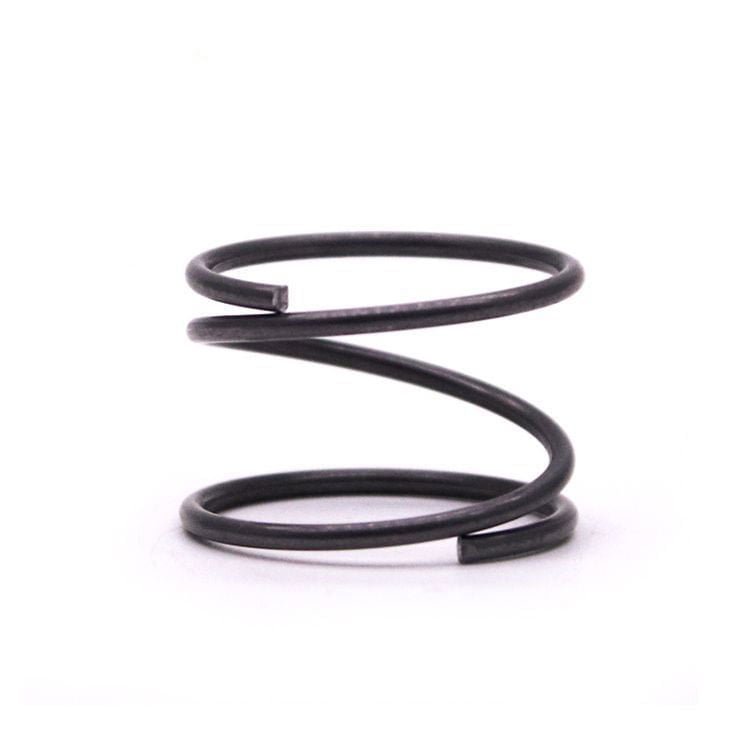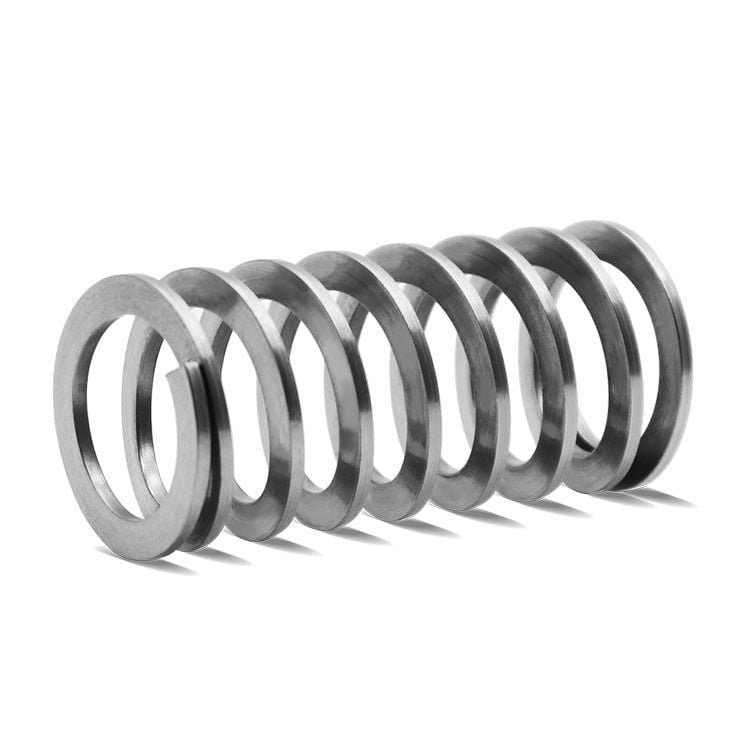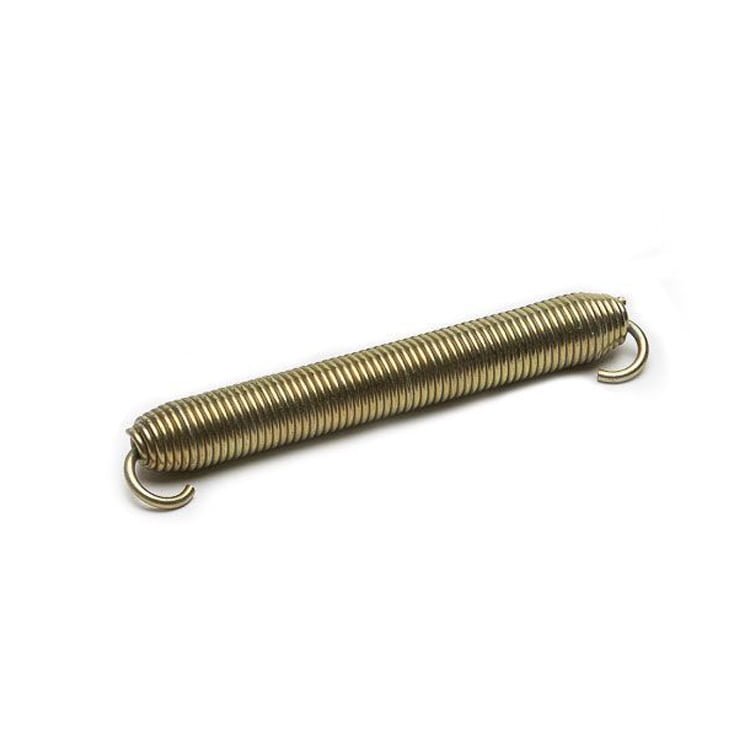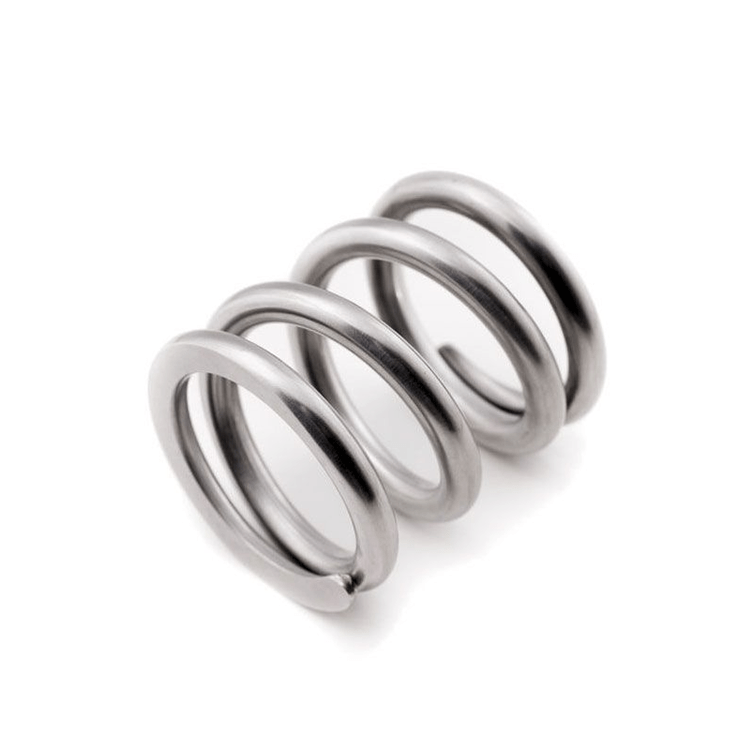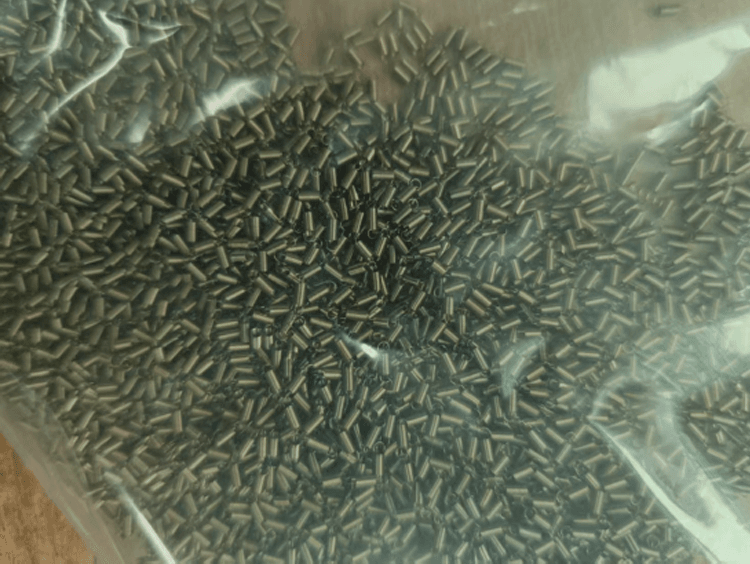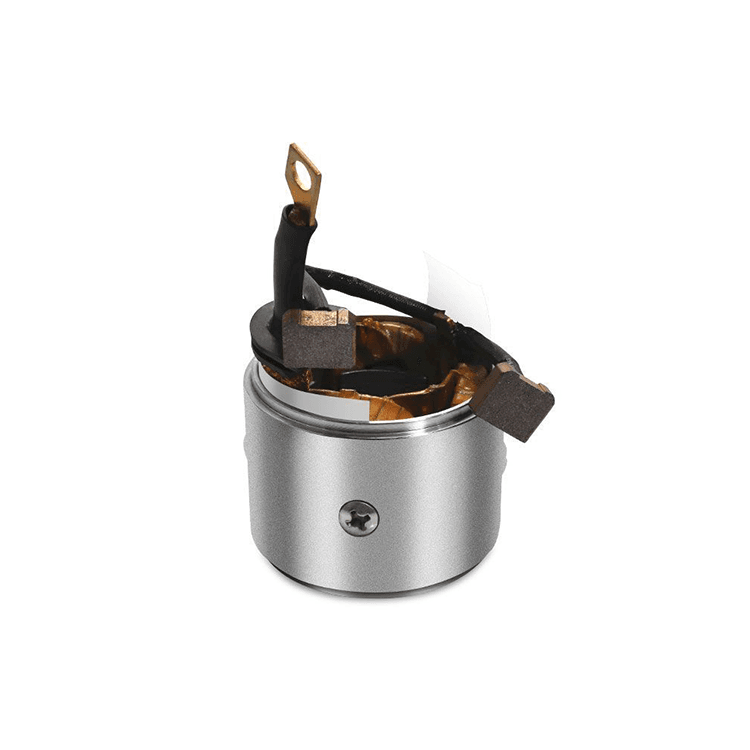Stainless steel snap rings
Stainless steel snap rings are suitable for applications in corrosive or high-temperature environments. Stainless steel alloys have different degrees of corrosion resistance, heat resistance and ductility.
Characteristics of stainless steel snap ring materials:
- Stainless steel: Made of stainless steel alloy materials, mainly composed of elements such as iron, chromium, and nickel, it has high corrosion resistance and oxidation resistance. Different models of stainless steel have different compositions and properties. For example, 304 stainless steel and 316 stainless steel are two common stainless steel materials, and they differ in corrosion resistance and strength.
- Corrosion resistance: stainless snap rings can resist corrosion from media such as air, water, and weak acids, and are suitable for various harsh environments.
- High strength: wire snap ring have relatively high strength and can withstand large axial and radial forces to ensure the stable fixation of parts.
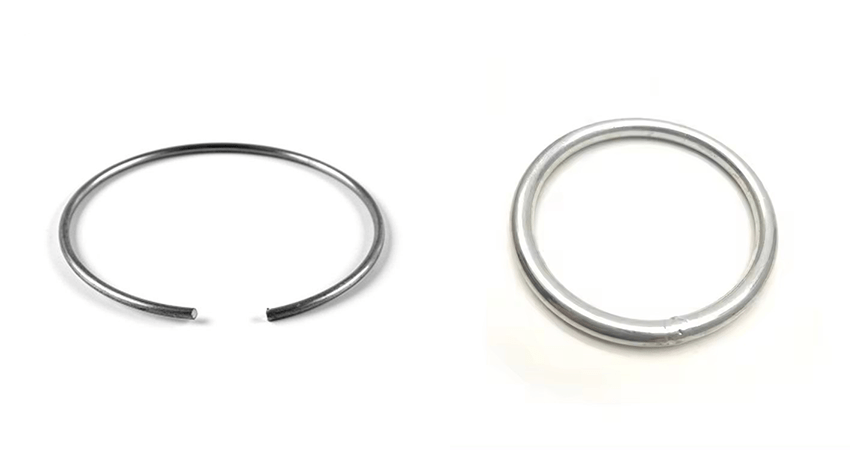
Stainless steel snap rings are an important mechanical component with many excellent characteristics and wide applications. Stainless steel snap rings are made of stainless steel materials and can maintain stable performance in various harsh environments.
In terms of function, wire retaining ring are mainly used for axial positioning and fixation to prevent axial movement of components on the shaft or within the hole. In automotive manufacturing, stainless steel circlips can be used to fix components on the wheel shaft to ensure the safety and stability of the form; in mechanical equipment, it can guarantee the normal operation of various transmission shafts.
Type and specification:
Stainless steel snap rings come in various types and specifications to meet different application requirements. Here are some common types and specifications:
- Types: Based on the differences in structure and usage methods,stainless retaining ring can be divided into external circlips and internal circlips;
- Specifications: The specifications of stainless steel snap rings are usually indicated by parameters such as size and material.
The installation and disassembly methods of stainless steel snap rings vary depending on the type of circlip and the application scenario. The following are common installation and disassembly methods:
Installation methods:
- Manual installation: For open circlips, open them and place them in the groove of the shaft or hole, then compress them in place by hand. For helical circlips, wrap them around the shaft or hole, then compress them in place by hand.
- Tool installation: Use specialized installation tools, such as circlip pliers or installation sleeves, to install the circlip onto the shaft or hole. These tools can provide better control and force to ensure the circlip is installed correctly.
Disassembly methods:
- Manual disassembly: For open circlips, use a screwdriver or other flat tool to pry it out of the groove. For helical circlips, use pliers or other tools to unscrew it from the shaft or hole.
- Tool disassembly: Use specialized disassembly tools, such as circlip pliers or disassembly sleeves, to remove the circlip from the shaft or hole. These tools can provide better control and force to ensure the safe disassembly of the circlip.
When installing and uninstalling stainless steel snap rings, the following points need to be noted:
- Before installation, it is necessary to clean the surface of the shaft or hole to ensure that the snap ring can be installed correctly and provide a good seal.
- Before installation, avoid using excessive force to prevent damage to the snap ring or the shaft/hole.
- When uninstalling the snap ring, use appropriate tools and avoid using excessive force to prevent damage to the snap ring or the shaft/hole.
Both installing and disassembling wire retaining ring require following the relevant safety operation procedures to ensure the safety of the operators.
The size accuracy of wire retaining ring is relatively high, which can closely cooperate with the matching components, improving the assembly accuracy and operation efficiency of the entire mechanical system. Stainless steel retaining rings play an indispensable role in many fields with their excellent performance, providing a strong guarantee for the stable operation of various mechanical devices.
